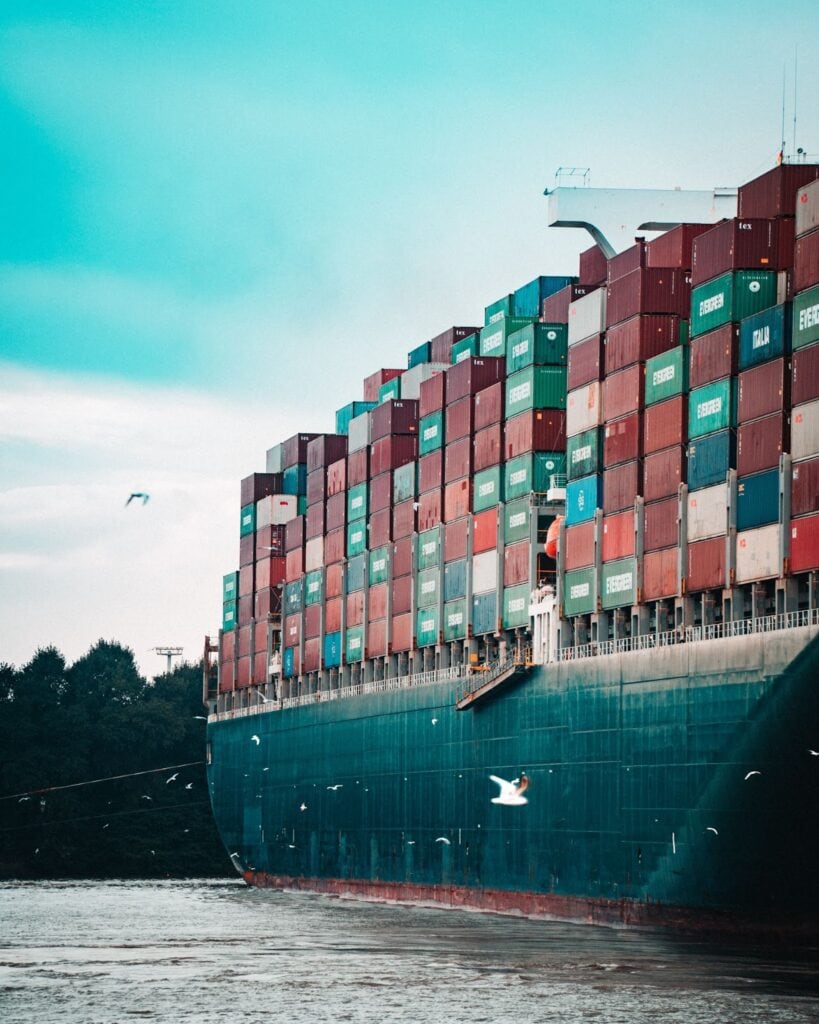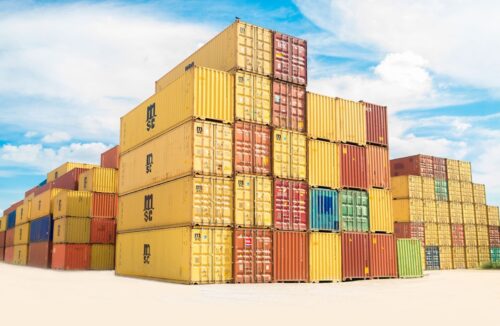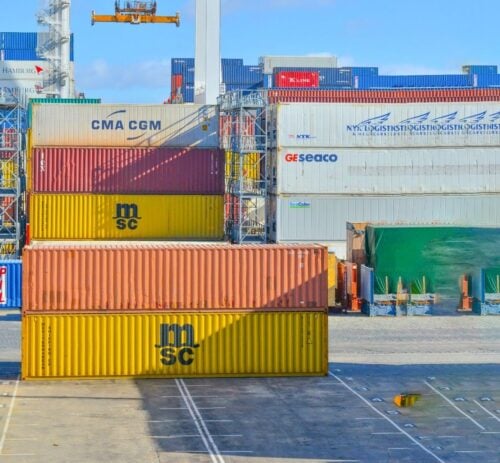Containerized Cargo: Definition, Types, and Process Insights

In this comprehensive guide on containerized cargo, including definitions, types, and process, we will explore its vital role in global trade.
As a professional interested in containerized cargo, you’ll find valuable insights into different types of containers and their specific uses within the supply chain. We will also discuss the intricate process involved in handling these containers at various stages of transportation.
Furthermore, we’ll examine the advantages that have made containerized cargo a dominant force in both international trade and logistics while addressing some challenges and considerations businesses face today. Finally, we look at future trends and innovations shaping this industry and answers to frequently asked questions about containerized cargo.
Introduction to Containerized Cargo
Containerized cargo has revolutionized the shipping industry, making transporting goods worldwide more manageable and efficient. The concept of containerization involves using standardized containers to pack and ship various products, simplifying logistics processes and reducing costs. This article investigates the development of containerization, its impact on global commerce, and how it has changed over time.
The idea of using containers for transportation dates back to the early 20th century when railway companies started utilizing wooden boxes to carry and protect fragile items during transit. Malcom McLean’s invention of intermodal shipping containers in the mid-1950s revolutionized global trade by allowing easy transfer between trucks, trains, and ships without unloading cargo.
This innovation transformed global trade by significantly increasing efficiency while reducing labor costs associated with loading and unloading cargo tank containers at each stage of transportation. Today, 90% of non-bulk cargo worldwide is transported via containers, highlighting their importance in facilitating international commerce.
Types of Containers

Different types of containers are available for the transportation of different goods worldwide. Let’s look at common container types and their uses in containerized cargo.
Dry Containers
Dry or general-purpose containers are the most commonly used type for storage and transporting a wide range of products. These enclosed steel or aluminum boxes come in standard sizes, such as 20-foot and 40-foot lengths.
They provide ample space for non-perishable items like clothing, electronics, furniture, and machinery parts. In addition, their waterproof design protects the cargo from external elements during transportation.
Refrigerated Containers
Refrigerated containers, or reefers, are essential in preserving perishable goods like fruits, vegetables, meat products, and pharmaceuticals throughout their journey.
Equipped with temperature control systems that maintain specific temperatures (usually between -25°C to +25°C), these specialized units ensure optimal conditions for sensitive commodities susceptible to spoilage due to heat or humidity fluctuations.
Flat Racks
Flat racks provide flexibility and capacity when handling oversized or irregularly shaped cargo that cannot fit into standard dry containers. A flat base with collapsible end walls on either side can accommodate heavy equipment such as construction materials or large vehicles by allowing easy loading from above using cranes or other lifting equipment.
Open Tops
Open-top containers are similar to dry containers but without a fixed roof, making them ideal for transporting tall or bulky items that cannot be loaded through the doors of regular units.
A removable tarpaulin cover and securing ropes protect the cargo from weather elements while providing easy access during the loading and unloading. Typical uses include shipping machinery, timber logs, and large sculptures.
Containerization Process
The containerization process is a crucial aspect of transporting goods efficiently and securely. It involves several steps, including loading, securing, and unloading the cargo.
Loading
Loading refers to placing goods into empty containers for transportation on container ships. This step requires careful planning to ensure that items are correctly arranged within the container to maximize space utilization while maintaining stability during transit.
Proper loading techniques make sure there is a full container load and also help prevent damage caused by shifting or falling cargo. For example, heavier items should be placed at the bottom with lighter ones on top to maintain balance throughout transport.
Securing
Securing cargo inside containers is essential for preventing movement during transportation and reducing potential damages. Different types of freight necessitate various securing techniques, such as lashing straps, chains, ropes, specialized locking systems, or dunnage materials.
Some standard securing methods include using lashing straps, chains, cords, or technical locking systems designed specifically for different types of containers (e.g., flat racks). Additionally, dunnage materials such as airbags or foam blocks may be used between cargoes to fill empty spaces and provide cushioning against shocks encountered en route.
Unloading
The final stage in the containerization process is unloading – removing goods from their respective containers upon arrival at their destination port or warehouse facility. This step must be executed carefully, as improper handling could damage both products and equipment involved in lifting operations (such as cranes).
Furthermore, efficient unloading container shipping practices can significantly reduce port turnaround times – allowing vessels to depart sooner for their next voyage, thus improving overall supply chain efficiency.
Advantages of Containerization

Using standardized shipping containers has significantly improved the efficiency of global trade by streamlining loading and unloading processes. In addition, with container ships designed to accommodate specific sizes and types of containers, it becomes easier for crane operators to move them on and off vessels quickly. This results in faster port turnaround times, ultimately reducing business transportation costs.
Before containerization, goods were often loaded individually onto ships – a process known as break-bulk shipping. However, this time-consuming method exposed cargo to potential damage from weather conditions or rough handling during transit between ports. Contrastingly, containerized cargo is securely packed within durable steel boxes that protect its contents from external elements while minimizing movement during transport.
Some of the safety and security enhancements include cargo tracking, tamper-proof seals, and risk mitigation, such as insurance coverage explicitly tailored for containerized cargo, ensuring that businesses are adequately protected against potential losses.
Challenges and Considerations
Containerized cargo has revolutionized the shipping industry, yet this technology also comes with its own set of obstacles to be aware of. These include proper packing, securing, labeling, and potential risks such as cargo damage, theft, or piracy.
Proper packing is essential to ensure that goods are not damaged during transportation. This involves using appropriate packaging materials like pallets or crates for heavy items to protect them from damage. Additionally, adequate securing measures must be taken to prevent the shifting of containers during transit. For instance, using lashing bars or strapping can help keep containers in place on a ship’s deck.
Correct labeling is crucial in ensuring smooth handling throughout the supply chain process. Each container should have clear labels displaying information such as contents description, destination port code, and consignee details. Failure to provide accurate information may lead to delays at customs checkpoints or misrouting of shipments.
There are always cargo damage risks including mechanical issues, natural disasters, and improper or rough port handling.
Theft and Piracy Concerns
Despite enhanced security measures, containerized cargo remains vulnerable to theft and piracy. Thieves target high-value goods such as electronics or luxury items, while pirates often hijack entire ships for ransom. To mitigate these risks, businesses should consider implementing additional security measures, like employing armed guards on board or using advanced tracking systems.
The challenges and considerations associated with containerized cargo are complex but can be managed with the right processes and procedures. Examining novel approaches that can facilitate processes while guaranteeing the merchandise’s security and protection is critical.
Future Trends and Innovation
The world of containerized cargo is continuously evolving, with emerging trends and innovations shaping the industry’s future. In this section, we will explore some key developments that could significantly impact how goods are transported around the globe.
Blockchain technology has been making waves in various industries, including logistics and supply chain management. By providing a secure, transparent, and tamper-proof digital ledger for tracking shipments from origin to destination, blockchain can help improve efficiency and reduce fraud in containerized cargo transportation. It also enables better collaboration among stakeholders involved in global trade by streamlining communication processes.
Automation has become increasingly prevalent within the shipping industry. These advancements, from automated container terminals to autonomous ships guided by artificial intelligence (AI), aim to increase operational efficiency while reducing human error risks associated with manual, labor-intensive tasks. As technology advances at an unprecedented pace, we can expect further automation integration into various aspects of containerized cargo handling processes.
Some future trends in containerized cargo include eco-friendly alternatives. Some examples are solar-powered containers, LNG-fueled ships, and biodegradable packaging materials.
By embracing new technologies and sustainable practices, businesses involved in global trade can stay ahead of the curve while contributing positively towards a greener future.
Frequently Asked Questions
This section will address three frequently asked questions about containerized cargo.
How is containerized cargo secured and protected during transportation?
Containerized cargo is secured using various methods, such as lashing bars, twist locks, or fastening belts. The containers themselves are designed with robust locking mechanisms for added security.
What are the most common types of containers used for containerized cargo?
The most common containers used for containerized cargo are dry, refrigerated, flat racks and open tops.
What are the factors that determine the cost of containerized cargo transportation?
The cost of transporting containerized cargo depends on various factors, including distance, type of shipment, container, and fuel prices. All of these factors influence freight rates.
Final Thoughts
With various types of catering to different needs, such as dry, refrigerated, flat racks, and open tops, businesses can now transport their goods more efficiently and securely.
As we look toward the future of containerized cargo transportation, emerging trends and innovations like blockchain technology, automation, and alternative fuel sources are poised to shape this industry further. By staying informed about these developments and adapting accordingly, businesses can optimize their supply chains; logistics professionals can improve efficiency and contribute to a more sustainable global economy.
If you want more information on containerized cargo or other logistics topics, check out Inbound Logistics, a leading industry publication with valuable insights and resources.

